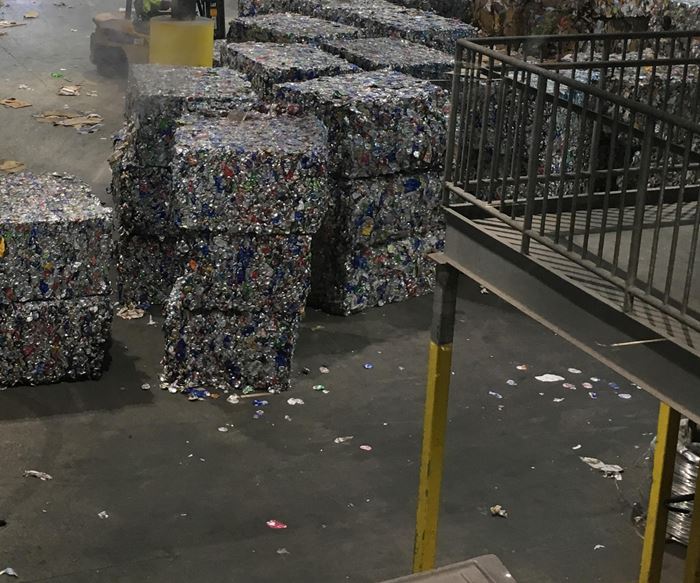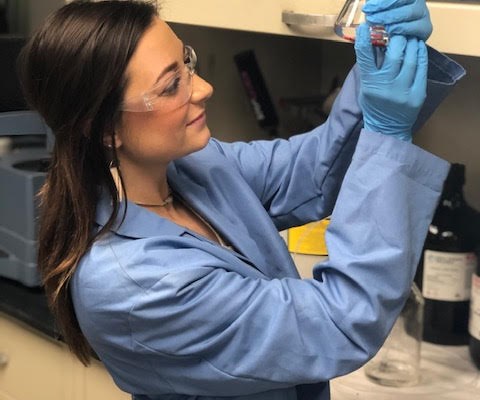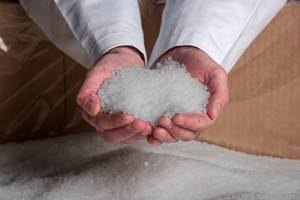Four Packaging Trends to Consider for 2020
Chroma Color’s Bishop Beall discusses his views on key trends to consider in the development of plastic packaging going forward.
My colleagues and I have been steadily reporting on the issue of sustainability and efforts underway toward a circular economy industry wide, including materials and additives suppliers who aim to integrate recycled content and/or biobased materials to their virgin resin portfolios. These come along with advances in mechanical and chemical recycling.
We recently came across a nicely prepared article written by Bishop Beall, v.p. of sales & business development at Chroma Color Corp., addressing four packaging trends very much worth considering for 2020 and beyond.
A major player in specialty color and additive concentrates of high quality and short lead times in the plastics marketplace, Chroma Color boasts extensive technical and manufacturing expertise along with its game-changing colorant technologies that have surprised and delighted customers for over 50 years in markets such as: packaging; wire and cable; building & construction; consumer; medical; healthcare; lawn & garden; durables; sanitation; recreation & leisure; transportation and more.
Here is a summary of Beall’s thoughts on the four key packaging trends:
▪ Reduce/ Reuse/ Recycle
It is now clear to industry executives that there is no simple answer to resolving the issues of plastics packaging. There’s an overall agreement that designers, processors, recycling equipment owners, Material Recovery Facilities (MRF), cities/ states, schools and citizens must work together to make improvements.
Out of these tough conversations, some good ideas have resulted on how to improve recycling rates, increase use of post-consumer resins (PCR), and address current recycling infrastructure challenges. For example, the cities that created educational programs for their communities about what can be recycled and what can’t be recycled have decreased contamination found in the stream. Also, MRF’s are adding new equipment with sorting robotics to reduce contamination. Meanwhile, the word is still out if plastic bans are effective motivators and are producing desired results.
▪ E-commerce
We can no longer ignore the increase in E-commerce orders for packaged products or the new requirements from companies such as Amazon ensuring that the container arrives without damage at its final destination.
If not yet aware, or if you have not started to modify your packaging, Amazon has listed the criteria for packages shipped from the warehouses on its site, including one of the biggest challenges—packages containing liquid.
Amazon has implemented a three-foot drop test for liquid packaging. The package must be dropped onto a hard surface without breaking or leaking. The drop test consists of five drops: flat on base, flat on top, flat on longest side, and flat on shortest side.
There is also a problem with products that have too much packaging. Consumers currently consider over-engineered packages as “environmentally unfriendly.” However, going too far in the other direction with too little packaging will make your brand look cheap.
As such, Beall advises: “It will be critical for you to spend extra time to find the right partner to help you meet these E-commerce guidelines so you don’t need to go back to the drawing board more than once.
▪ Packaging Made from Post Consumer Resins (PCR)
Many packaging brands are adding more PCR to their current product lines and the biggest challenge is to make sure it looks as great as the packaging you currently have on the shelves. Why? PCR material often has a grey/yellow tint, black flecks, and/or gels in the resin that make it difficult for the processor to produce a truly clear container or to match the brand colors exactly compared to those products made from virgin resins.
Fortunately, some PCR and color companies are meeting these challenges by partnering and deploying new colorant technologies like Chroma’s G-Series. The patented G-Series reportedly is the most highly-loaded coloring solution in the industry and can more easily overcome the color variation inherent in most PCR. This type of ongoing development work coupled with continued innovation from color houses will be necessary to produce a package that delivers on packaging companies’ sustainability goals without compromising a product’s aesthetics or performance.
▪ Packaging Supply Partners:
Because of the current challenges with supply chains due to new tariffs and a slowing global economy, companies are rethinking their current strategy and packaging executives are looking for new value-add packaging supply partners.
What are the qualities executives should be looking for in a new partner? Be on the lookout for a core group of packaging supply companies that have been investing heavily over the past five years in their customer service departments, improving their manufacturing processes, and maintaining a “real” culture of innovation.
Questions for Potential Partners: Finally, Chroma’s Beall offers a set of questions to pose to a potential partner that would help determine if they are really a forward moving company that would help you survive in this new economy:
- Are they investing in R&D at an above-market percentage?
- Do they have the ability to do rapid prototyping?
- Does their balance sheet allow for investment in new equipment, automation or other key process improvement initiatives?
- Do they have success stories? Are their current customers their biggest fan?
Sums up Beall, “If you get a yes for all four—be sure to arrange a meeting to learn how they can help you overcome your packaging challenges.”
Related Content
Impacts of Auto’s Switch to Sustainability
Of all the trends you can see at NPE2024, this one is BIG. Not only is the auto industry transitioning to electrification but there are concerted efforts to modify the materials used, especially polymers, for interior applications.
Read MoreLatest Data on Bottled Water Shows Continued Strong Growth
Bottled water’s volume surpassed soft drinks for the first time in 2016 and has done so every year since.
Read MoreMedical Tubing: Use Simulation to Troubleshoot, Optimize Processing & Dies
Extrusion simulations can be useful in anticipating issues and running “what-if” scenarios to size extruders and design dies for extrusion projects. It should be used at early stages of any project to avoid trial and error and remaking tooling.
Read More‘Monomaterial’ Trend in Packaging and Beyond Will Only Thrive
In terms of sustainability measures, monomaterial structures are already making good headway and will evolve even further.
Read MoreRead Next
Making the Circular Economy a Reality
Driven by brand owner demands and new worldwide legislation, the entire supply chain is working toward the shift to circularity, with some evidence the circular economy has already begun.
Read MoreBeyond Prototypes: 8 Ways the Plastics Industry Is Using 3D Printing
Plastics processors are finding applications for 3D printing around the plant and across the supply chain. Here are 8 examples to look for at NPE2024.
Read More


























